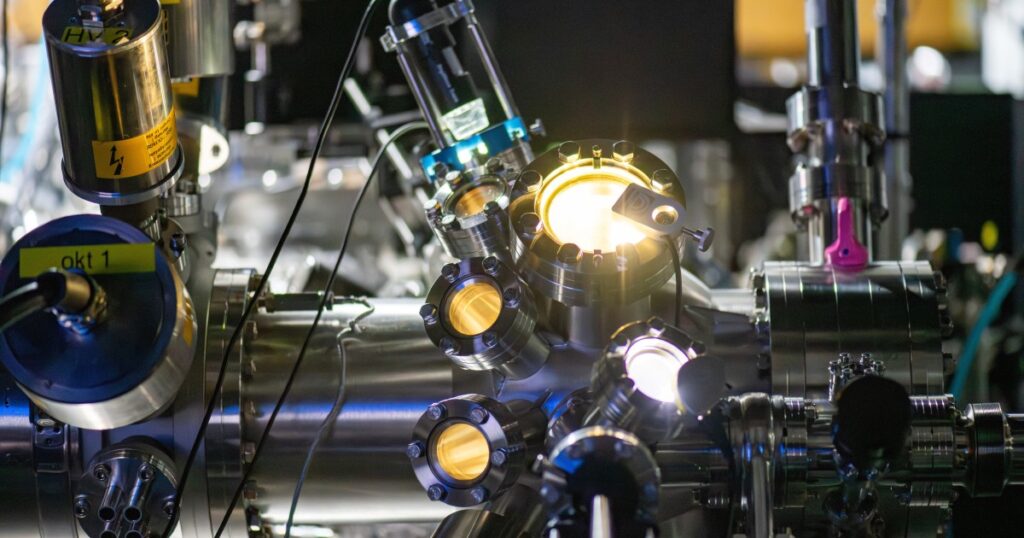
In a groundbreaking achievement, researchers from the Femtosecond Spectroscopy Unit at the Okinawa Institute of Science and Technology (OIST) have successfully observed the evolution of dark excitons in atomically thin materials. This world-first discovery, published in Nature Communications, paves the way for significant advancements in both classical and quantum information technologies.
Professor Keshav Dani, head of the unit, emphasized the importance of this discovery:
“Dark excitons have great potential as information carriers because they are inherently less likely to interact with light, and hence less prone to degradation of their quantum properties. However, this invisibility also makes them very challenging to study and manipulate. Building on a previous breakthrough at OIST in 2020, we have opened a route to the creation, observation, and manipulation of dark excitons.”
Understanding the Role of Dark Excitons in Valleytronics
Dark excitons, elusive yet promising components in the field of valleytronics, have captured the interest of researchers due to their potential applications in quantum technologies. Xing Zhu, co-first author and PhD student in the unit, explained the nuances of this field:
“In the general field of electronics, one manipulates electron charge to process information. In the field of spintronics, we exploit the spin of electrons to carry information. Going further, in valleytronics, the crystal structure of unique materials enables us to encode information into distinct momentum states of the electrons, known as valleys.”
This ability to use the valley dimension of dark excitons to carry information positions them as promising candidates for quantum technologies. Dark excitons are inherently more resistant to environmental factors like thermal background than the current generation of qubits, potentially requiring less extreme cooling and making them less prone to decoherence, where the unique quantum state breaks down.
Defining the Energy Landscapes of Bright and Dark Excitons
Over the past decade, significant progress has been made in the development of a class of atomically thin semiconducting materials known as TMDs (transition metal dichalcogenides). In these materials, atoms are aligned in a crystal lattice, confining electrons to specific energy levels. When exposed to light, electrons are excited to a higher energy state, forming excitons with the positively charged holes left behind.
Excitons can be categorized into ‘bright’ and ‘dark’ based on their quantum properties. Bright excitons recombine quickly, emitting light, whereas dark excitons do not emit light due to mismatched quantum properties of the electron and hole. Dr. David Bacon, co-first author now at University College London, elaborated:
“There are two ‘species’ of dark excitons: momentum-dark and spin-dark, depending on where the properties of electron and hole are in conflict. The mismatch not only prevents immediate recombination, allowing them to exist up to several nanoseconds, but also makes dark excitons more isolated from environmental interactions.”
Observing Electrons at the Femtosecond Scale
The research team utilized the world-leading TR-ARPES (time- and angle-resolved photoemission spectroscopy) setup at OIST, which includes a proprietary, table-top XUV (extreme ultraviolet) source. This setup allowed them to track the characteristics of all excitons over time by simultaneously quantifying momentum, spin state, and population levels of electrons and holes. This simultaneous quantification had never been achieved before.
Their findings revealed that within a picosecond, some bright excitons are scattered by phonons into different momentum valleys, becoming momentum-dark. Later, spin-dark excitons, where electrons have flipped spin within the same valley, dominate and persist on nanosecond scales. Dr. Julien Madéo of the unit summarized the significance:
“Thanks to the sophisticated TR-ARPES setup at OIST, we have directly accessed and mapped how and what dark excitons keep long-lived valley information. Future developments to read out the dark excitons’ valley properties will unlock broad dark valleytronic applications across information systems.”
Implications for Future Technologies
This development represents a major leap forward in the field of valleytronics, offering new avenues for quantum computing and information technologies. The ability to manipulate dark excitons and preserve valley information could lead to more efficient and robust quantum systems, with applications ranging from secure communications to advanced computing capabilities.
As the research community continues to explore the potential of dark excitons, the findings from OIST set a new benchmark in the study of quantum materials. The next steps involve further refining the techniques to read out the valley properties of dark excitons, potentially revolutionizing the way information is processed and stored at the quantum level.





